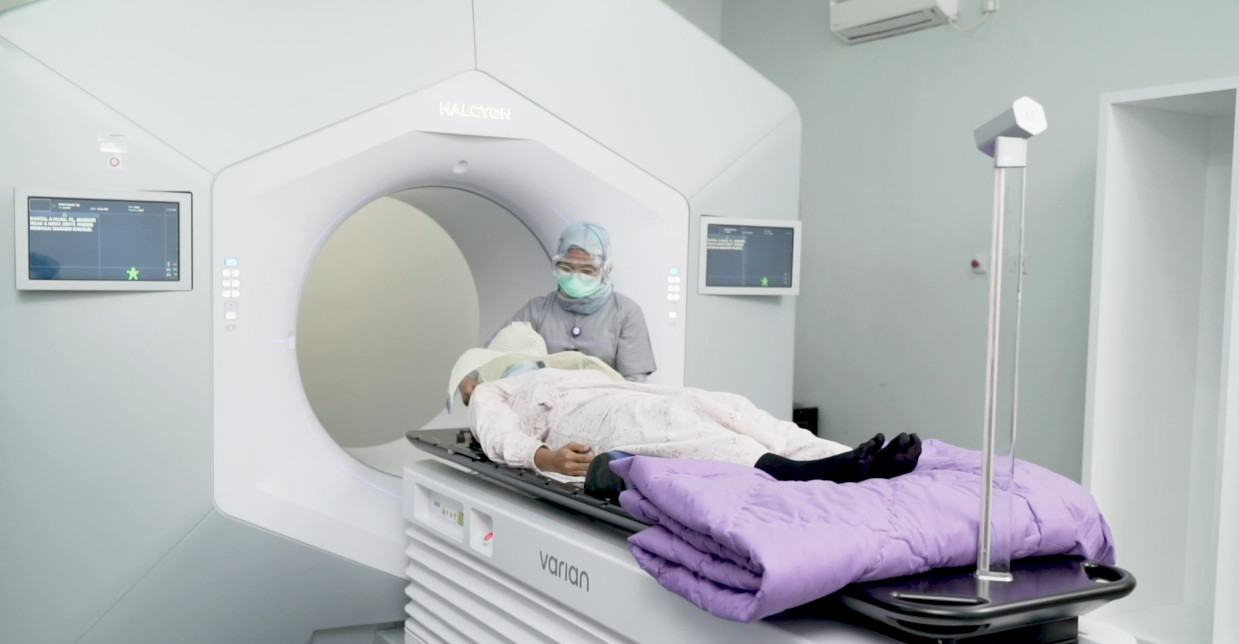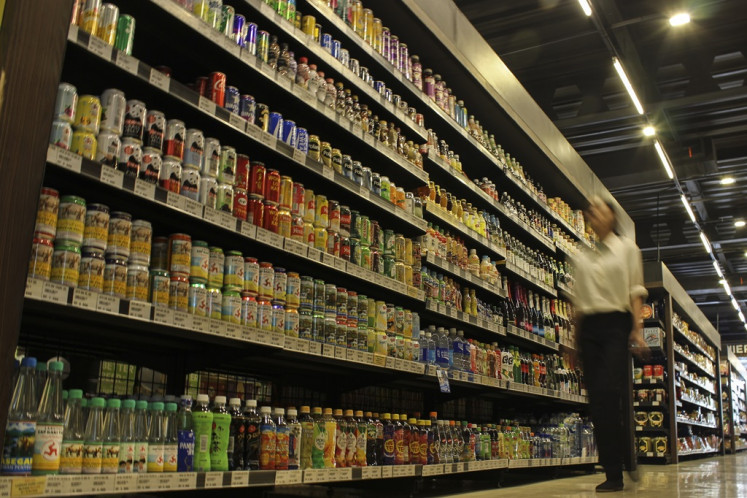Popular Reads
Top Results
Can't find what you're looking for?
View all search resultsPopular Reads
Top Results
Can't find what you're looking for?
View all search resultsInnovation for transformation toward a developed, prosperous Indonesia
Indonesia must improve its innovation capacity to drive both economic growth and technological expansion to develop into the country it has dreamed of being since independence.
Change text size
Gift Premium Articles
to Anyone
 Innovative health care: A medical technician assists a cancer patient during a radiotherapy session at Cipto Mangunkusumo National Central Public Hospital in Central Jakarta. The hospital installed the new equipment in its radiation therapy ward in cooperation with California-based Varian Medical Systems. (Courtesy of/Varian)
Innovative health care: A medical technician assists a cancer patient during a radiotherapy session at Cipto Mangunkusumo National Central Public Hospital in Central Jakarta. The hospital installed the new equipment in its radiation therapy ward in cooperation with California-based Varian Medical Systems. (Courtesy of/Varian)
T
he World Bank classifies a country as "high-income" (prosperous) when its gross national income (GNI) per capita is above US$12,535. Meanwhile, UNESCO (2010) defines "developed country" as one that meets at least 75 percent of its technological needs domestically, and not through imports. These countries are also called technology-innovator countries.
In the last few decades, those countries with a GNI per capita greater than $15,000 included the United Arab Emirates, Qatar, Saudi Arabia, Kuwait, Bahrain, Brunei Darussalam and Oman. However, since their technological capacity is still at the level of technology-adaptor countries, which import more than 75 percent of their technological needs, these countries are considered prosperous (rich), but not yet developed.
Rich nations that rely heavily on exploiting their natural resources and not on their technological (innovation) capacity can easily slip into the “poor” category as a result of external economic or political shocks. A recent, telling example is Venezuela.
During its oil boom from the mid-1990s to 2012, Venezuela was very rich nation whose GNI per capita ranged from $15,000 to $40,000. But when international oil prices dropped dramatically from $120 per barrel in 2012 to just $50 to $60 per barrel in 2013, where prices have hovered up until now, the nation became trapped in poverty. Its inflation rate is extraordinary high at more than 1,000 percent, and the majority of its people face difficulty meeting their basic needs, including food, clean water and health services.
After 75 years of its independence and despite significant improvements in almost all aspects of human life and its development sectors, Indonesia is still a developing, upper-middle income country with GNI per capita of $4,050 (World Bank, 2020). Meanwhile, it remains a technology-adaptor country in terms of its technological capacity (UNESCO and UNDP, 2020).
Indonesia also faces a high level of income inequality (the wealth gap between the rich and poor), as reflected in its high GINI coefficient of 0.39, with the combined wealth of the top 1 percent of its richest citizens equivalent to 49.3 percent of national wealth (Credit Suisse, 2012).
In order to fulfill its independence goal to become a developed, just, prosperous and sovereign nation, the Indonesian government and people have to work smarter and harder to generate inclusive economic growth of more than 7 percent per year and achieve full employment.
The empirical data have taught us that all nations that have escaped the middle-income trap to become advanced and prosperous nations (Singapore, New Zealand and 34 Organization for Economic Cooperation and Development member countries) are those that have succeeded in economic transformation.
Basically, economic transformation is a development process that shifts a nation’s economy from heavy reliance on natural resources (primary sector) and cheap labor into an economy that is driven by knowledge and innovation. This involves reallocating productive factors from traditional agriculture and fisheries, as well as extractive mining, to environmentally friendly and modern agriculture, mining, manufacturing (secondary sector) and services (tertiary sector). It also involves the reallocation of those factors among activities in the industrial and services sectors.
More broadly, economic growth that is high, inclusive and sustained is associated with the capacity to diversify domestic production; that is, generate new economic activities (sectors), strengthen economic linkages within the country and cultivate its capacity for innovation.
The industrial and services sectors typically contribute dynamically to this diversification process. Indeed, the evidence of the past quarter century – or the post-war era in developing countries – clearly indicates that rapid economic growth in those countries has been invariably associated with diversifying production into manufacturing and modern services, while slow growth has been usually associated with swelling low-productivity services (UN, 2008).
As innovation is the foundational factor that drives successful economic transformation, Indonesia must take more concerted efforts from this point forth to boost its innovation capacity. It is worth noting that innovation should be considered in a broad sense, as in the development of new economic activities or new ways of doing existing activities. In this regard, it is important to recognize the role of not only technological (e.g. new machinery, production technologies, living species, materials and products) innovations, but also non-technological innovations.
For example, developing new marketing networks and innovations, as well as new organizational practices or structures, is often more important than adopting new production technologies, materials and products. Indeed, the ability to reap the benefits of new technologies frequently depends on simultaneous innovations in distribution and organization.
In 2019, Switzerland was the nation with the highest innovation capacity, followed by Sweden, the US, the Netherlands and the United Kingdom. Indonesia ranked 85th out of 129 countries surveyed by the World Economic Forum. Among ASEAN countries, Singapore is the most innovative (8th), followed by Malaysia (35th), Vietnam (42nd), Thailand (43rd), the Philippines (54th) and Brunei Darussalam (71st).
In order to accelerate improvements in Indonesia’s innovation capacity, we must increase the quality of our human resources in terms of knowledge, expertise, skills, work ethics and morality, through integrated, comprehensive and continuous improvement of the health, education and research and development sectors. Entrepreneurship and entrepreneurs must also be harnessed and expanded from 3 percent of the population now to at least 7 percent as a minimum requirement to becoming a developed and prosperous nation (ILO, 2010).
***
The writer heads the maritime affairs and fisheries department in the Indonesian Democratic Party of Struggle (PDI-P), and is also a former maritime affairs and fisheries minister.









